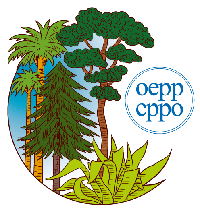Partners
Partners

European and Mediterranean Plant Protection Organisation (EPPO)
EPPO is an inter-Governmental organisation, recognized by the Food and Agricultural Organisation of the United Nations (FAO) as the Regional Plant Protection Organization for Europe. Since 2002, EPPO has worked specifically on invasive alien plants with a focus on developing PRA documents on specific species, disseminating information throughout the region; recommending measures to prevent the introduction and spread of invasive alien plants along with recommendations on measures to control invasive alien plants already present in the region.
EPPO achieves this by working with a network of leading scientific experts that form the EPPO Panel on Invasive Alien Plants. The Panel includes experts in botany, risk mapping, risk assessment, biodiversity, ecology, ecological impact, invasive plant management and experts in plant health regulation.
To facilitate the completion of a PRA, EPPO developed the CAPRA software (Computer Assisted Pest Risk Analysis) which houses the EPPO Prioritization Process for Invasive Alien Plants and the EPPO Decision-support Scheme for quarantine pests. These IT tools are leading software for the prioritization and risk assessment of invasive alien plants in the EPPO region. In 2009, following a recommendation by experts, EPPO designed a Decision-Support Scheme for an Express Pest Risk Analysis (PM 5/5 (1)) enabling the user to conduct a more rapid PRA, but still capturing all necessary information.
This Express Scheme was used to evaluate invasive alien plants for the first time in 2015, when a combined expert working group risk assessed two species (Myriophyllum heterophyllum and Alternanthera philoxeroides). Both species were recommended for regulation in September 2015.
Within the EPPO region, the scientific and regulatory community regard EPPOs PRAs as robust, high value scientific documents that meet the requirements of international risk assessment protocols.
EPPOs PRAs on invasive alien plants include: Alternanthera philoxeroides, Baccharis halimifolia, Cabomba caroliniana, Crassula helmsii, Heracleum persicum, Heracleum sosnowskyi, Hydrocotyle ranunculoides, Ludwigia peploides, Ludwigia grandiflora, Lysichiton americanus, Microstegium vimineum, Myriophyllum heterophyllum, Parthenium hysterophorus, Polygonum perfoliatum, Puraria montana var. lobata, Senecio inaequidens, Sicyos angulatus and Solanum elaeagnifolium.

The Centre for Ecology and Hydrology (CEH)
The Centre for Ecology and Hydrology (CEH) is the UK’s Centre of Excellence for integrated research in terrestrial and freshwater ecosystems. It is one of four research centres belonging to the Natural Environment Research Council (NERC). As part of NERC it is a ‘non-departmental public body’. CEH is an active research body in invasive species and has recently led the task “Establishment of an EU information system on alien and invasive alien species” as part of the EU IAS strategy consultation. In addition, CEH has led some key EC-funded projects including “Invasive alien species – framework for the identification of invasive alien species of EU concern” (ENV.B.2/ETU/2013/0026), “Scientific workshop to complete selected invasive alien species (IAS) risk assessments” (ARES (2014) 2425342 - 22/07/2014) and “Invasive Alien Species – Prioritising prevention efforts through horizon scanning” (ENV.B.2/ETU/2014/0016).

